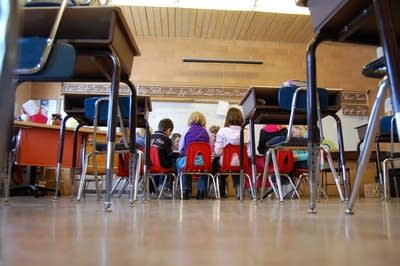Reading scores mostly flat, race gap persists
Go Deeper.
Create an account or log in to save stories.
Like this?
Thanks for liking this story! We have added it to a list of your favorite stories.

New scores from a test called the Nation's Report Card show Minnesota students are still performing above the national average in reading.
But a big gap remains between how well white students perform, compared with students of color.
The scores are from a test called the National Assessment of Educational Progress, or NAEP, which are given every two years to fourth and eight graders. It's one of the few tests that offers reliable comparisons between states.
Minnesota is still a strong-performing state in reading. The state average score in fourth grade was 223 out of 500, and 270 for eighth graders. Both numbers exceed the national average -- 220 and 262, respectively -- and are in the top 16 states, but the scores are also mostly flat compared to how Minnesota did two years ago.
Turn Up Your Support
MPR News helps you turn down the noise and build shared understanding. Turn up your support for this public resource and keep trusted journalism accessible to all.
That bothers Education Commissioner Alice Seagren.
"There's been no movement upwards," she said. "And I think at some point you have to say, 'Yeah we're maintaining our strength overall, but I would like to push that further.'"
Seagren says the state has paid a lot of attention to math and science in recent years and scores have improved. She adds today's scores signal a need to renew efforts in reading.
The results once again reveal Minnesota's achievement gap that shows how well white students do compared to students of color. It doesn't matter which race or ethnicity you compare: Minnesota's white students scored higher in both 4th and 8th grade.
The largest gap was a 36-point difference between the average scores for white and Hispanic students in fourth grade.
A statement from the teachers union Education Minnesota calls the scores the 'latest wake-up call' that it's time to deal with the achievement gap. The union is pushing for legislation to designate schools with the worst achievement gaps and require smaller class sizes and other measures in those schools.
Charlie Kyte, who heads the state Association of School Administrators, says you can't just blame schools and teachers for the gap. He says every Minnesota school is working to close the gap, but other 'life' factors have to be considered, like whether children live in poverty and have the same learning environments at home as other children.
"If it was simply a matter of teaching better and using more interventions in the schools, we would have started to see some fairly significant closing of the gap already," Kyte said.
Minnesota echoed the nation with today's test results in that national scores were also flat. U.S. Education Secretary Arne Duncan issued a statement, saying the results once again show achievement isn't growing fast enough and no one should be satisfied with the results.




